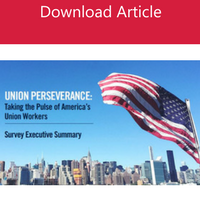Recognizing these challenges and areas for progress, The Economist Intelligence Unit (EIU) sought to better understand the dynamics that define the landscape of American union workers today and in the years ahead. In research conducted in September 2016 and sponsored by Prudential, we surveyed 1,573 active U.S. union members aged 18 and over, working in 15 different industries. The survey sample includes members of the millennial, Generation X and baby boomer generations. The respondents are about 58% male, and nearly half have earned or are in the process of completing a four-year college degree or higher. Nearly 90% work full-time, approximately two-thirds have been union members for ten years or more, and slightly more than half live in suburban areas.
The survey sample includes members of the millennial, Generation X and baby boomer generations. The respondents are about 58% male, and nearly half have earned or are in the process of completing a four-year college degree or higher. Nearly 90% work full-time, approximately two-thirds have been union members for ten years or more, and slightly more than half live in suburban areas. The survey resulted in three overarching findings: (1) there is a generational disconnect among union members; (2) millennials have higher expectations of unions and the overall workplace; and (3) unions can improve engagement by offering training and taking new approaches to meet member needs. How unions and the society at large respond will determine the future prospects for both union and non-union workers.
Read the executive summary, written by the EIU and sponsored by Prudential >>











